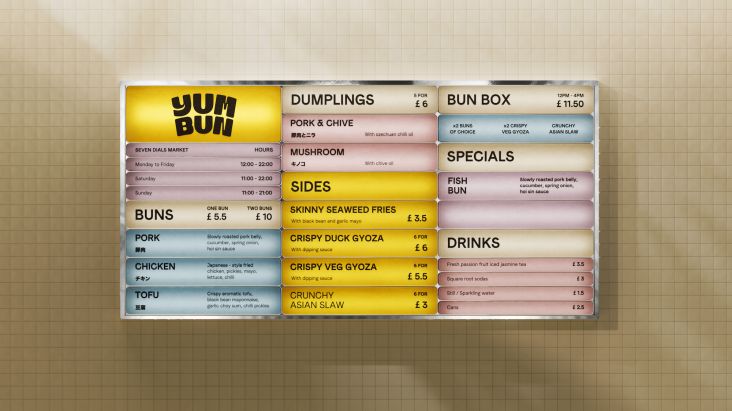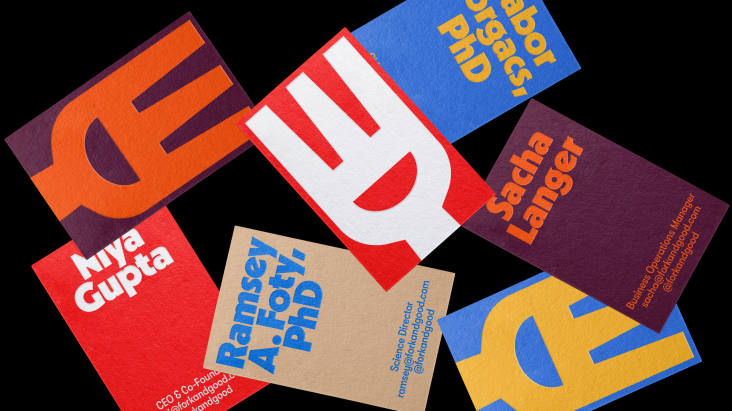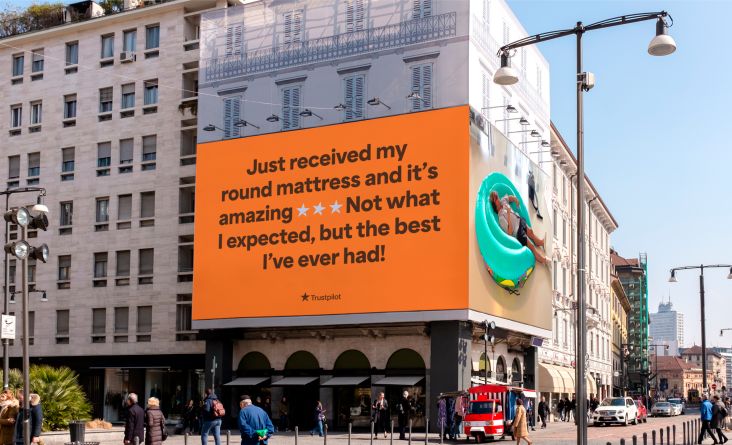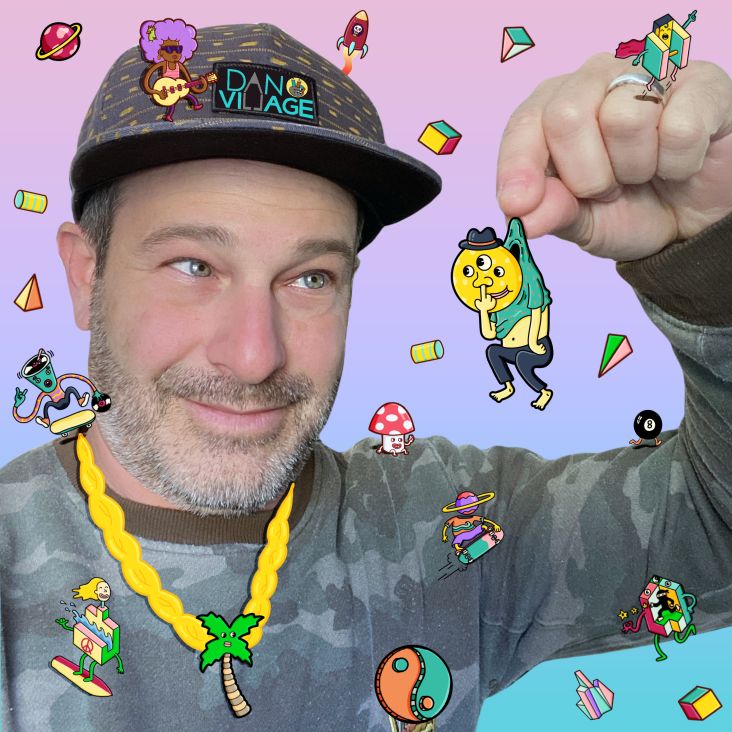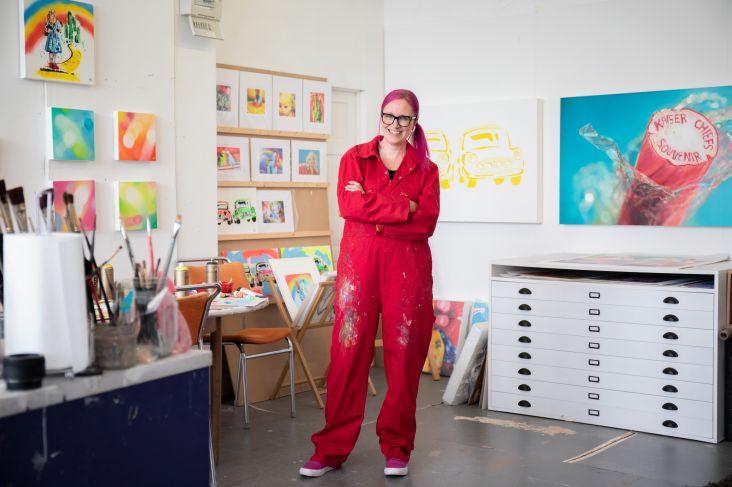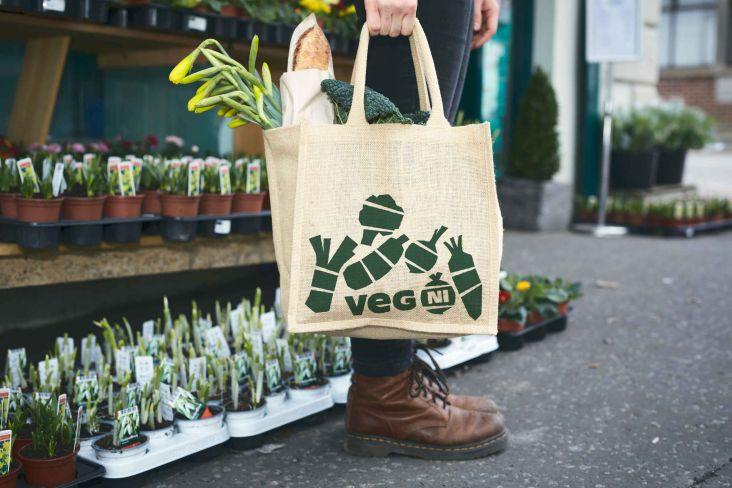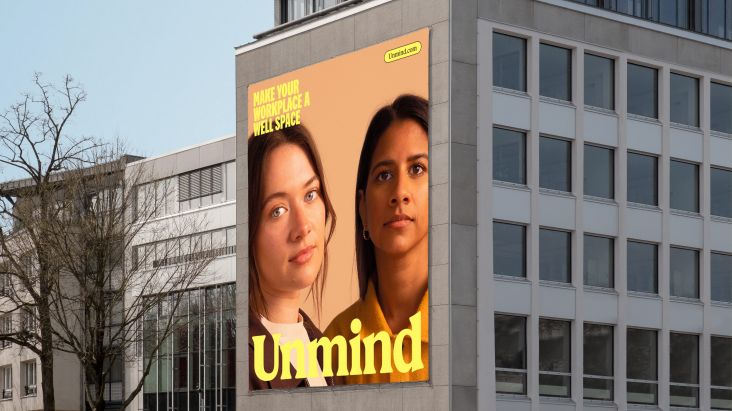Sam Wilde's complex patterned worlds explore the tension between organic & human-made
In the four years since graduating from the Royal College of Art in London, Sam Wilde has won numerous prestigious awards for his intricate fine art patterns and enjoyed collaborations with brands such as Apple, John Lewis, Liberty and the Turner Contemporary. We chatted with Sam to find out more.
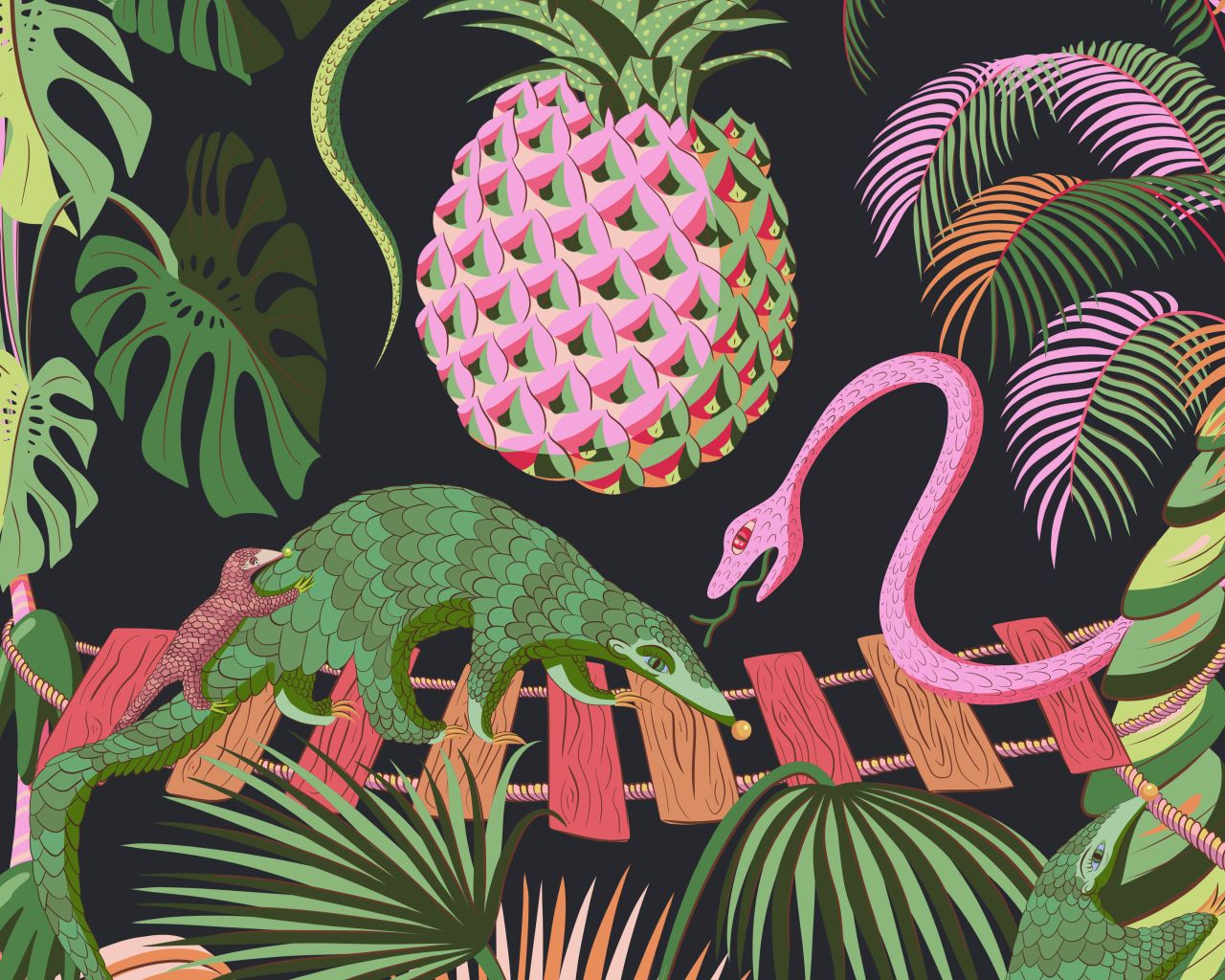
Precarious Pangolins – Carnival (Detail) © Sam Wilde
Sam Wilde began his career in London's financial sector after graduating in Natural Sciences from Durham University, specialising in biology, conservation and statistics. He was a business analyst and, later, a raw materials trader. In his spare time, though, he liked to be creative and enjoyed making art. "I used to draw and paint as a child," he tells Creative Boom, "but gave it up for over a decade to focus on my studies. Only when I started working as a full-time graduate, did I begin to create again. I'd pick up my pencil anytime I had a moment to spare, on the train ride to work, in my lunch breaks, on the weekends, you name it."
During this time, Sam was teaching himself to draw by looking at the fan art communities on Tumblr, and he began sharing his own illustrations online as well. "For some reason, one of my posts went viral, and I had a flood of messages asking me to keep up the good work. I remember one message, in particular, saying that the artwork 'made them reminisce about their childhood'. I realised then that connecting with someone I'd never met and providing them with a brief moment of escapism meant more to me than any of my previous accomplishments. From that point onwards, my dream became to one day work as an artist."
This revelation meant a return to higher education, which led to him achieving a master's in Printed Textiles from the Royal College of Art and marking a complete change in direction.
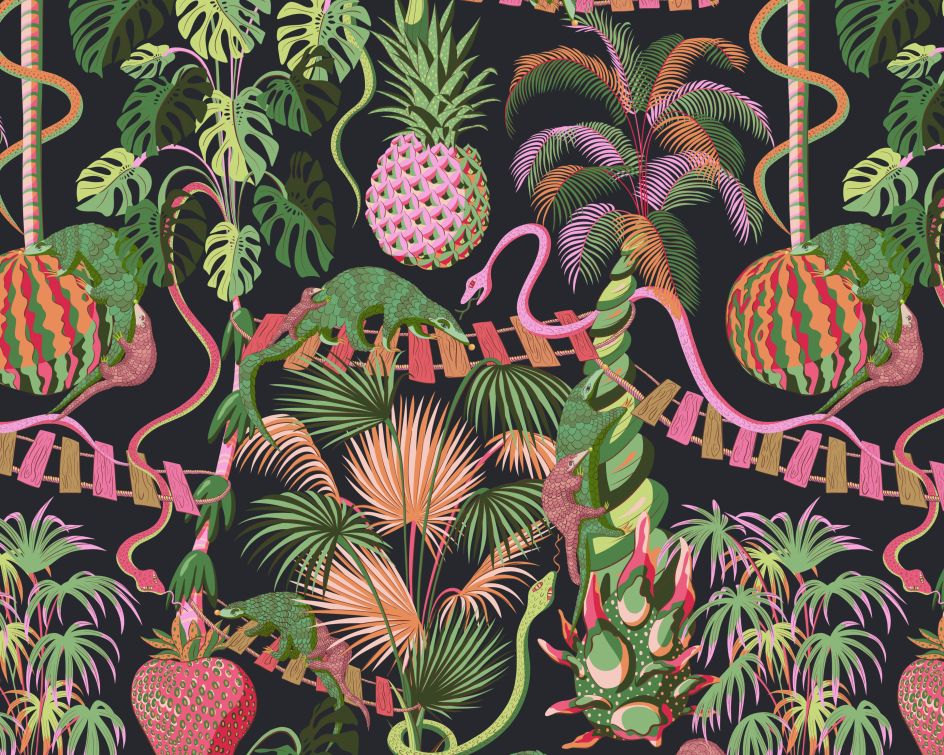
Precarious Pangolins – Carnival © Sam Wilde
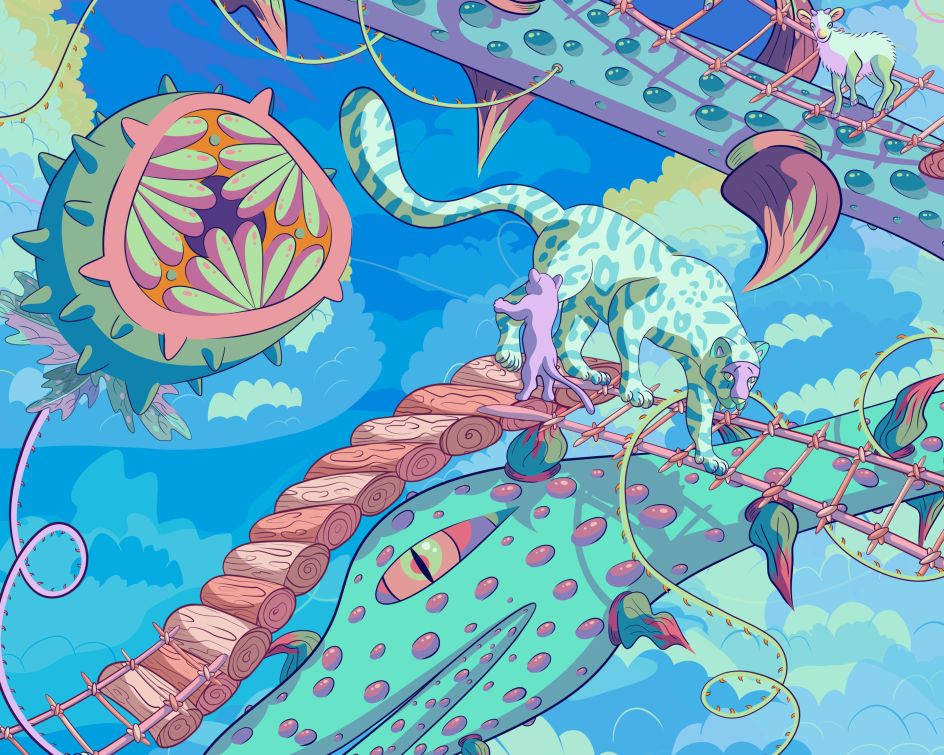
Lofty Heights – Cerulean (Detail) © Sam Wilde
Working across various mediums, including animation, ceramics, digital art, illustration, screen printing and watercolour, Sam mostly takes inspiration from '90s video games, Japanese animation master Hayao Miyazaki and evolutionary biology. Yet his history in science and mathematics is also evident in his detailed and complex illustrations – there's an analytical pattern to his artwork, a formula and rhythm at play.
It's work that hasn't gone unnoticed. After quickly making a name for himself in the creative sector, Sam has become a leading new designer, scooping a British Design Award, Marks & Spencer Fashion Fabric Award, Svenskt Tenn Textile Talent Award, TexSelect Design Futures Award and spotlighted as a Saatchi Art Artists to Collect in 2022. His recognition has opened doors, and he's since worked with various household names, some of whom we've already mentioned.
Sam says of his style: "Patterns are all around us, on our screens, clothes, public spaces, furniture, stationary, you name it. We usually don't give these patterns much more than a second thought. But what if these patterns were so much more? What if we saw them as windows of opportunity? A feast for the eyes. Epic worlds we could escape into. To immerse ourselves within, to learn from, to empower us. That's what my cross-disciplinary approach is about a space for the patterns I've created to come to life. To bring my worlds into your world through illustration, animation and art installation."
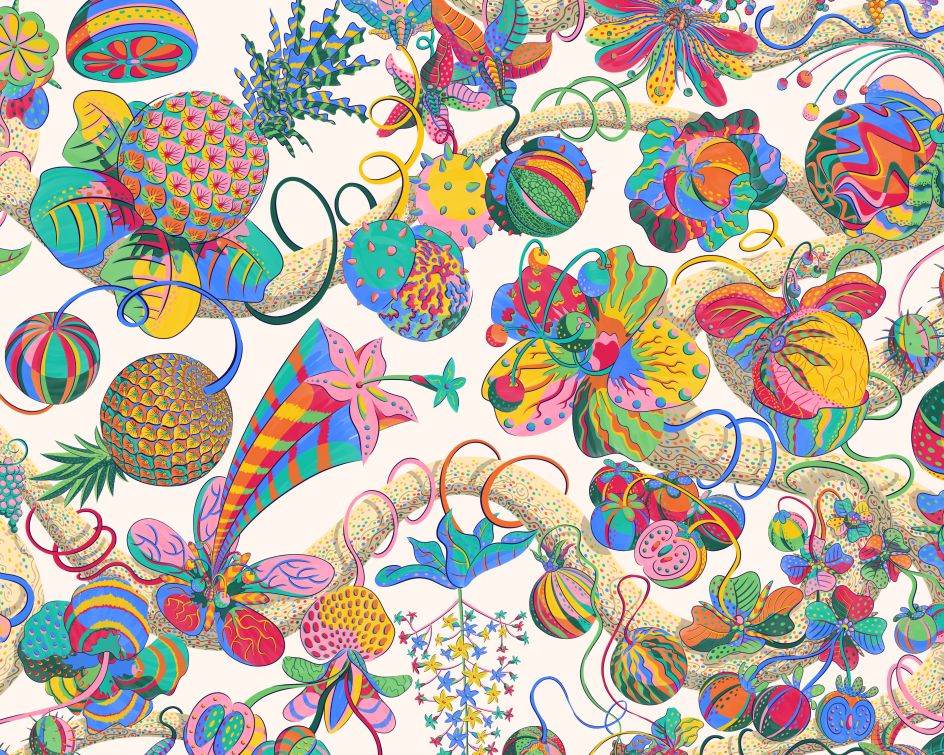
Hubris Tree – Confetti © Sam Wilde
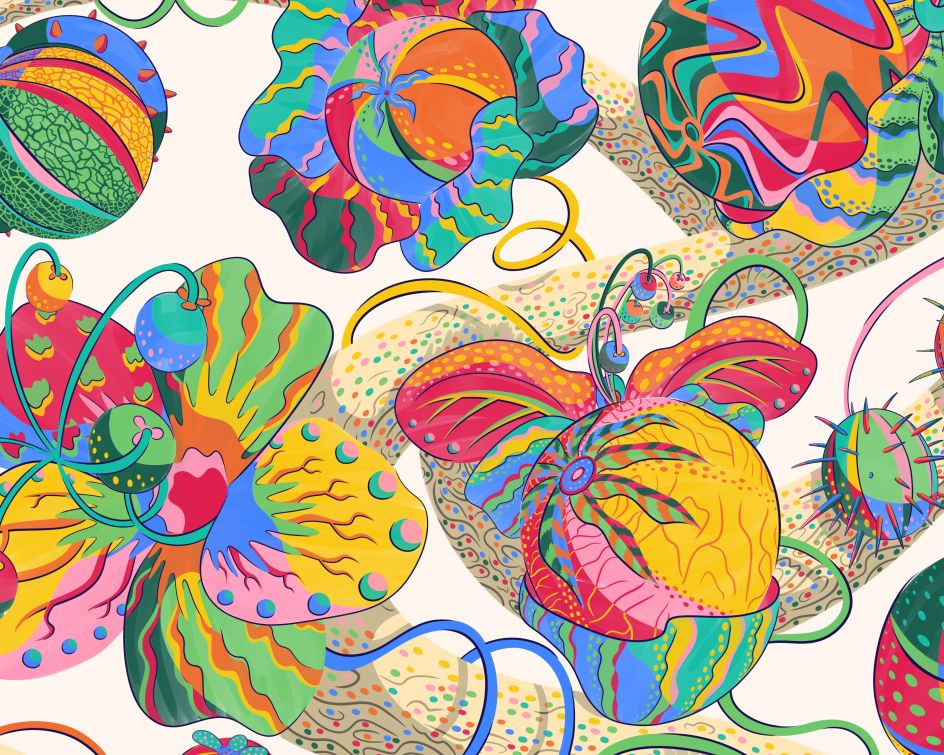
Hubris Tree – Confetti (Detail) © Sam Wilde
Aside from his biggest influences, Sam admits he also finds inspiration from the "tension between the organic and human-made". He says, "There's something unexpectedly beautiful about the interplay between the two. Like an oil slick on the ocean's surface, it's tragic but also beautiful in its inevitability. The two are in many ways juxtaposed, yet in my mind, equally as evocative. I would give an example of looking at a ripe watermelon and then at a glowing lava lamp. Both are eye-catching and captivating, but are they really so 'different' in how they make us feel at that moment? Is one better than the other just because it's from nature?"
With that in mind, Sam claims he often thinks about how our natural environments might look in the not-too-distant future. "Now, I'm sure anyone reading this would love to do their utmost to preserve nature's pristine majesty in its purest form. But realistically, how possible is the ambition to keep the natural world untouched by human hands? Especially when we consider the pressure of growing populations, ever-advancing technologies and our omnipresent hunger for global resources.
"Now imagine if such a future wasn't so dystopian. But instead, if there was an odd sort of 'synthetic beauty' to the artificial melding into nature's ecosystems. As if the watermelon and the lava lamp had become 'one'. A world where genetically-modified crops have cross-bred with the natural flora. A world where radiation has seeped into the soil and given the plantlife a strange yet compelling neon glow. A world where artificial fertilisers have 'super-charged' the ecosystems and made everything grow in excess. Those are the worlds I want to bring to life and delve into."
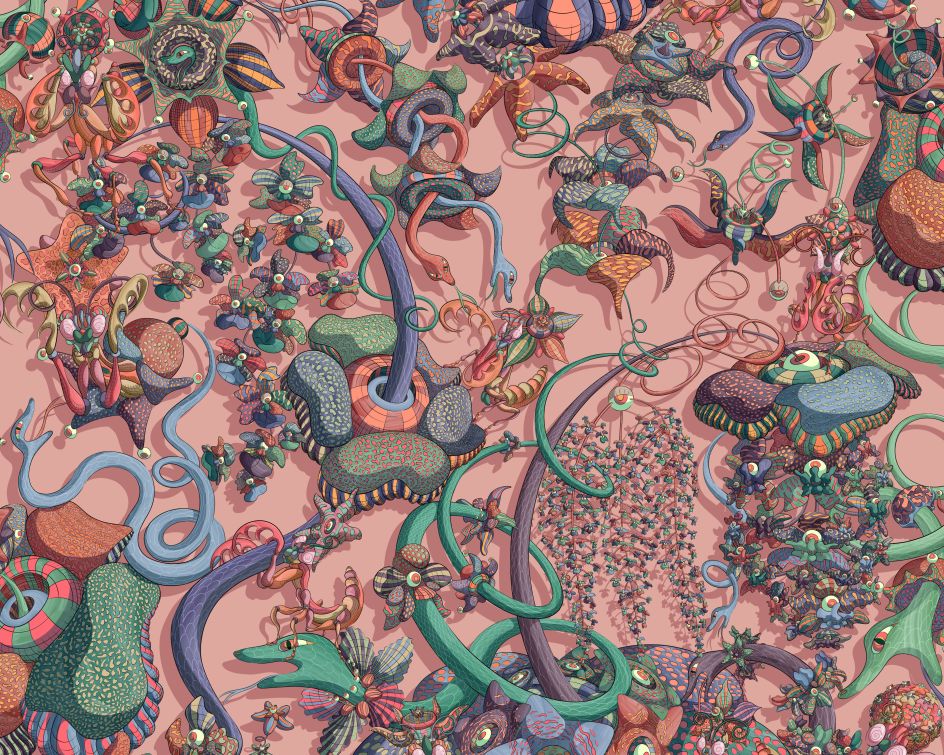
Helter Skelter – Persimmon © Sam Wilde
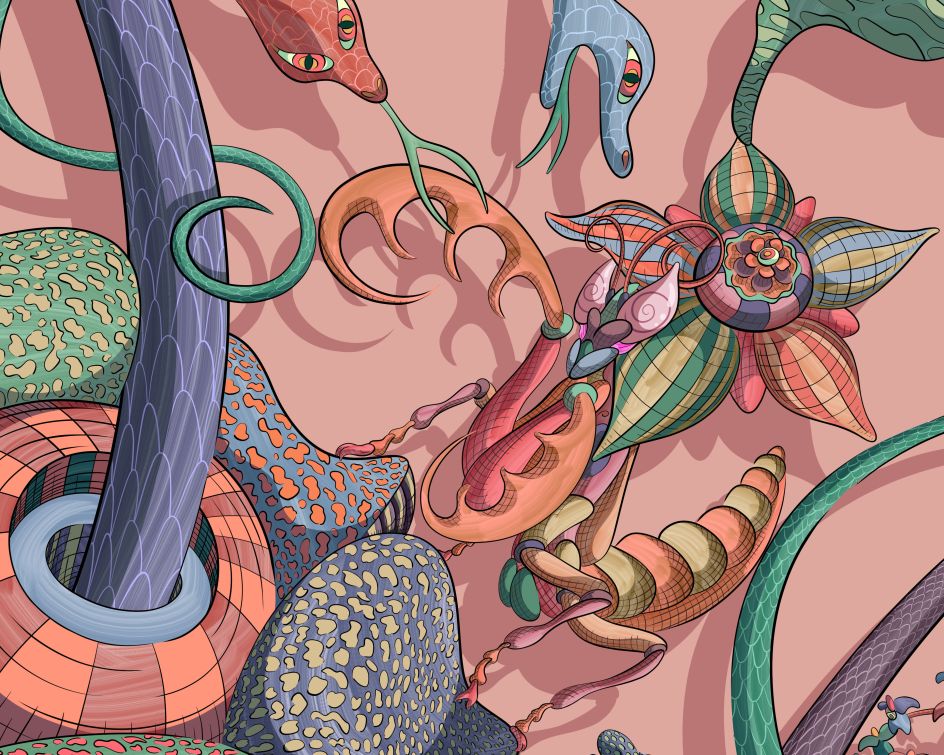
Helter Skelter – Persimmon (Detail) © Sam Wilde
Conservation plays a big part in Sam's creative practice. "The brilliant thing about the natural world is, the more you learn about it, the more you'll marvel at its many wonders. This thought became the cornerstone of my creative practice. Visualising little-known biological phenomena and spinning them into fantasy narratives founded on scientific truths. And it's through these works that I hope to ignite a newfound understanding of the very real magic found throughout the natural kingdom.
"However, there will be no natural kingdom to speak of if we don't do our part to conserve its majesty for future generations." For this reason, Sam started the #BIOappropriation initiative, which takes the philosophy behind cultural appropriation and applies those same principles to the natural world. "Put simply, if brands have profited in any way from the inspiration they've gained from the natural world, then it's only right to re-invest a portion of those proceeds back into the protection and growth of those biological environments," he says.
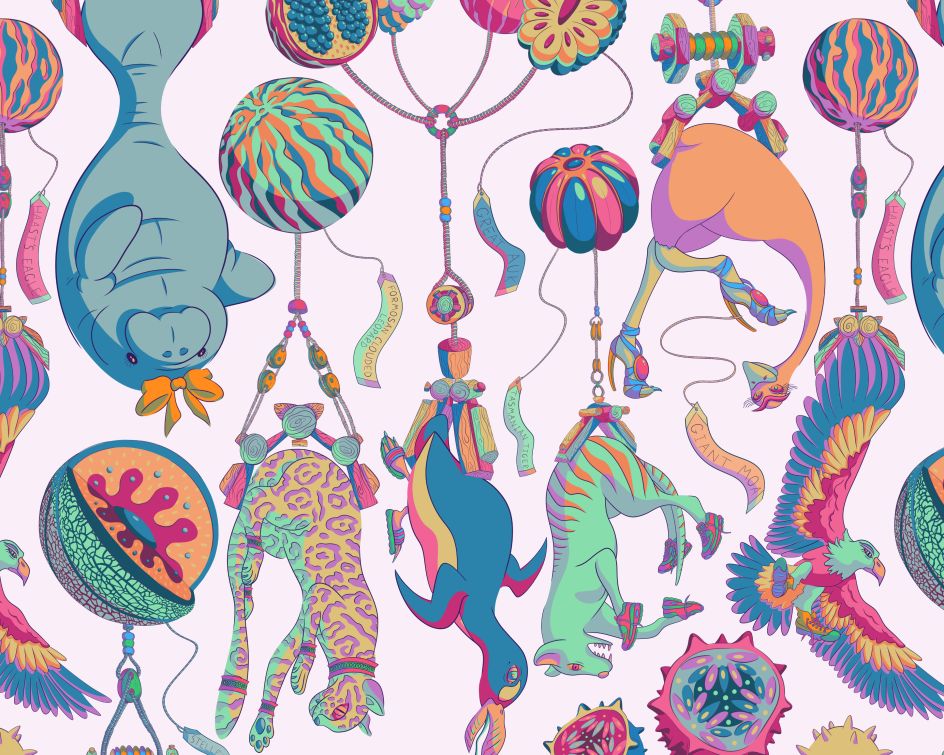
Crane Carnival – Toybox © Sam Wilde




 by Tüpokompanii](https://www.creativeboom.com/upload/articles/58/58684538770fb5b428dc1882f7a732f153500153_732.jpg)


 using <a href="https://www.ohnotype.co/fonts/obviously" target="_blank">Obviously</a> by Oh No Type Co., Art Director, Brand & Creative—Spotify](https://www.creativeboom.com/upload/articles/6e/6ed31eddc26fa563f213fc76d6993dab9231ffe4_732.jpg)








